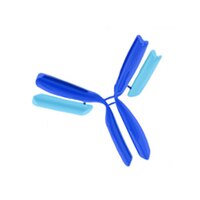cDNA cloning and expression of platelet p24/CD9. Evidence for a new family of multiple membrane-spanning proteins.
Lanza, F, et al.
J. Biol. Chem., 266: 10638-45 (1991)
1991
显示摘要
This study was designed to clone, sequence, and express the full-length cDNA for the human platelet p24/CD9 antigen. A 1.3-kilobase cDNA clone was identified that has an open reading frame encoding a mature protein of 228 amino acids (approximately 25,400 Da) containing 10 cysteine residues and four putative transmembrane domains. The identity of the clone was confirmed by: (i) its predicted size, (ii) identity to four peptide sequences from the isolated protein including the NH2 terminus, and (iii) expression of the isolated clone in Xenopus oocytes and Chinese hamster ovary cells. p24/CD9 has sequence identity (24-34%) to four other cell-surface proteins: ME491, a melanoma antigen; CO-029, a carcinoma antigen; CD37, a leukocyte antigen; and SM23, an antigen of the parasitic helminth Schistosoma mansoni. The five proteins have a similar number of amino acids and are characterized by the presence of four putative transmembrane domains. These data indicate the presence of a new family of surface antigens that may function in cellular activation and differentiation. | 2037603
 |









